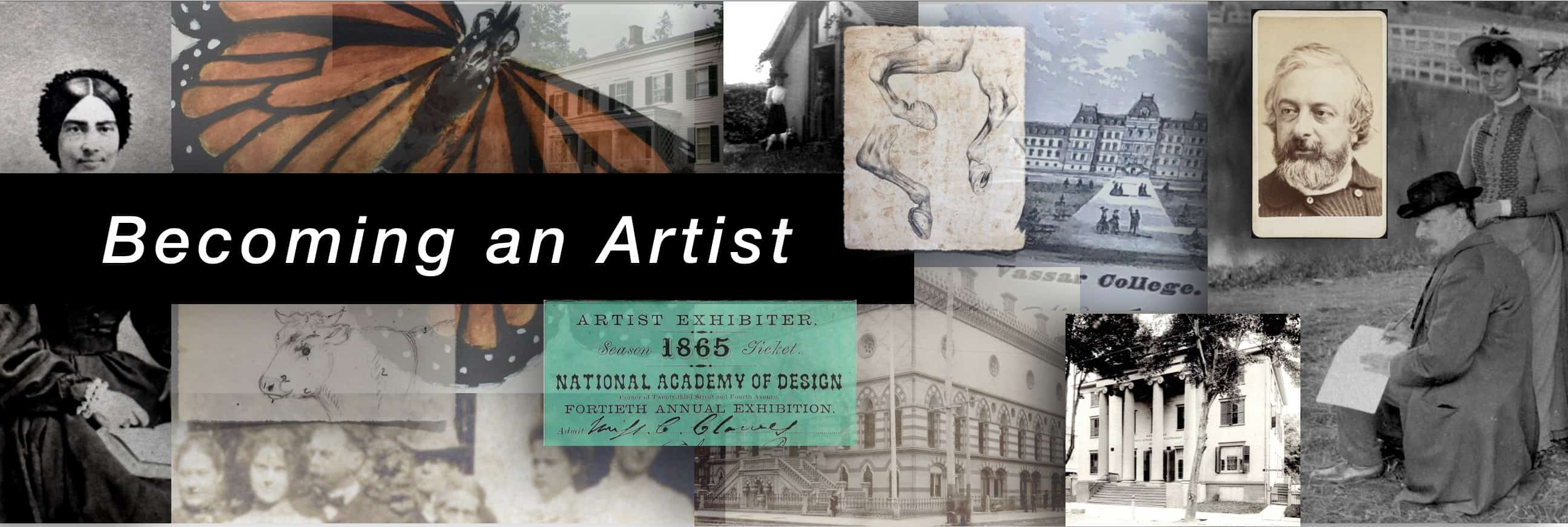 Scroll down to take yourself through the online exhibition.
Scroll down to take yourself through the online exhibition.Click a subchapter heading to “jump” to that topic. Or just keep scrolingl down.
This chapter covers the period of Caroline’s life from her relocation to her late mother’s brother and his family at the farm affectionately known as Heartsease in LaGrange. It was a talented, energetic and supportive home whose ambition including building a very successful international apple business, complimented by a citrus business from lands purchased in Florida.
I. CREATIVE INFLUENCE OF HEARTSEASE II. CITY OF SCHOOLS: RONDEL III. EMERGING VASSAR INFLUENCE: VAN INGEN IV. NATIONAL ACADEMY OF DESIGN V. AN ARTIST IN BUSINESS & SOCIETY I. CREATIVE INFLUENCE OF HEARTSEASEHome, Apple Farm, Studio
There is a story passed down through the Hart-Hubbard family that Heartsease, Caroline’s new home, was given a blessing by the boss carpenter when construction was completed in 1839 – “Peace and Plenty: Always full and never empty.†And so it was. Generation after generation of family members came to live at Heartsease, some for a short time, and others, like Caroline, for their entire lives. Caroline joined a household already bursting at the seams that included her late mother’s brother, uncle Benjamin, his wife Elizabeth Nichols Hart. They would come to have six children that would serve effectively as siblings to Caroline, especially Mary who was born the same year as Caroline. Also living at Heartsease was the mother of “Aunt Elizabeth,” Elizabeth (Smyth) Nichols (1780-1858). Caroline had, of course, been to the house many times. When the extended family learned that Caroline’s sister Lydia was to go to Virginia and Caroline to LaGrange, Julia Evans wrote to Elizabeth Hart expressing her wish that “I hope, dear aunt, you will find in her (Caroline) another daughter and that she will be happy in your house.†After years of uncertainty Caroline was finally settled, surrounded by supportive family members who emphasized the value of education and personal expression.
Whereas the Christmas season might previously have been a reminder of her mother’s death, Christmas 1851 found Caroline in a whole new world. One of her gifts that year were five drawing books from her aunt Adelia Nichols, a skilled artist herself. Caroline wrote about the books to her sister Lydia shortly after (image at right). It seems such a small gift but in a way it was also Caroline’s rebirth in a loving household where her talent was already recognized and nurtured.
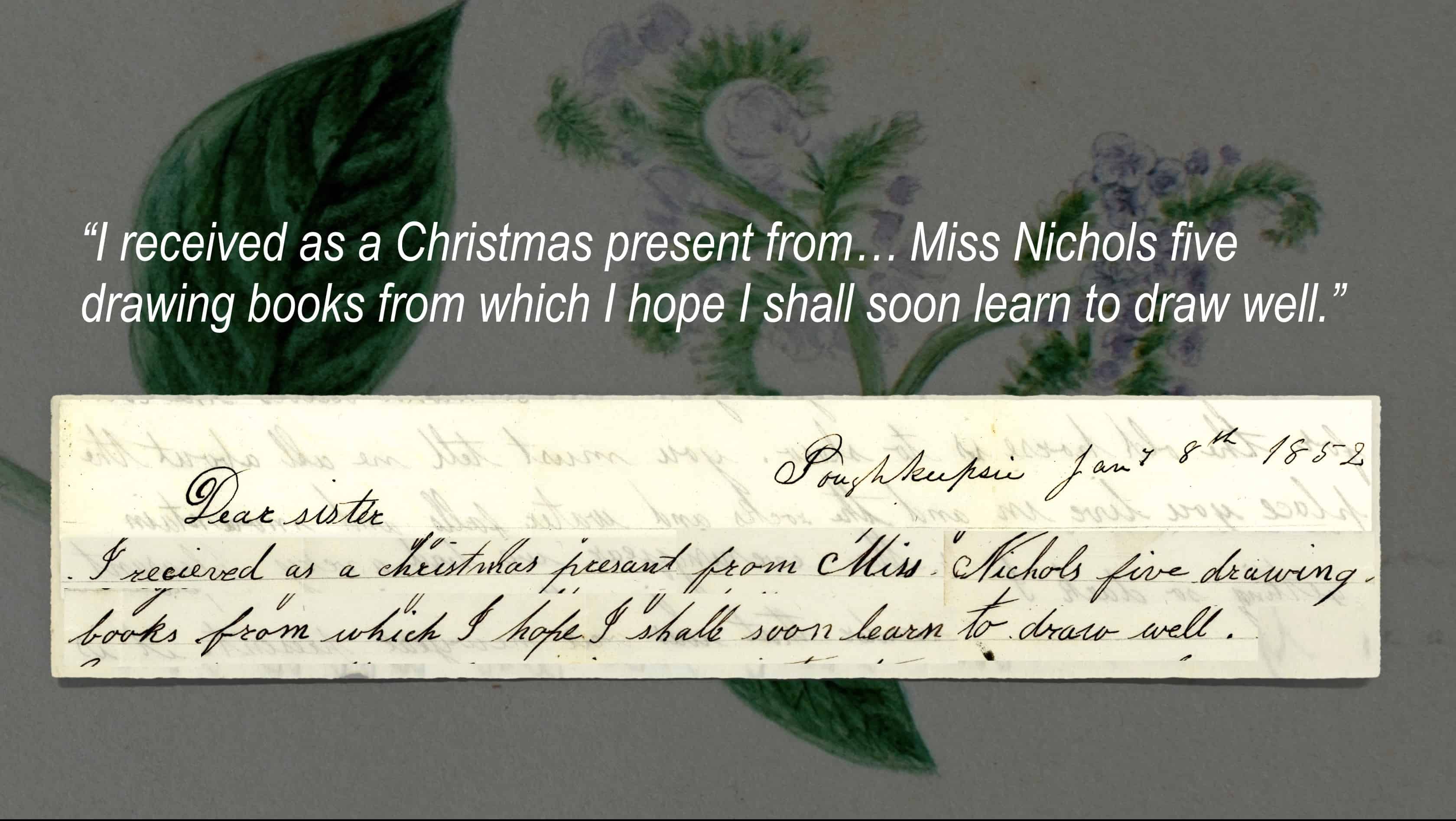
Caroline wrote to her sister just after her first Christmas at Heartsease.
April 1853 Drawings
Below are details of two pencil sketches she signed and dated in April of 1853. Clearly, her 1851 wish was being realized, she was indeed learning to draw well.
Caroline’s Family at Heartsease

Living at “Heartsease†also opened up new worlds of adventure. Caroline writes of a July 4, 1852 visit to museums in New York City and Poughkeepsie. In November of 1853 she writes to her father about a visit to the Crystal Palace exhibition in New York City.
Studio
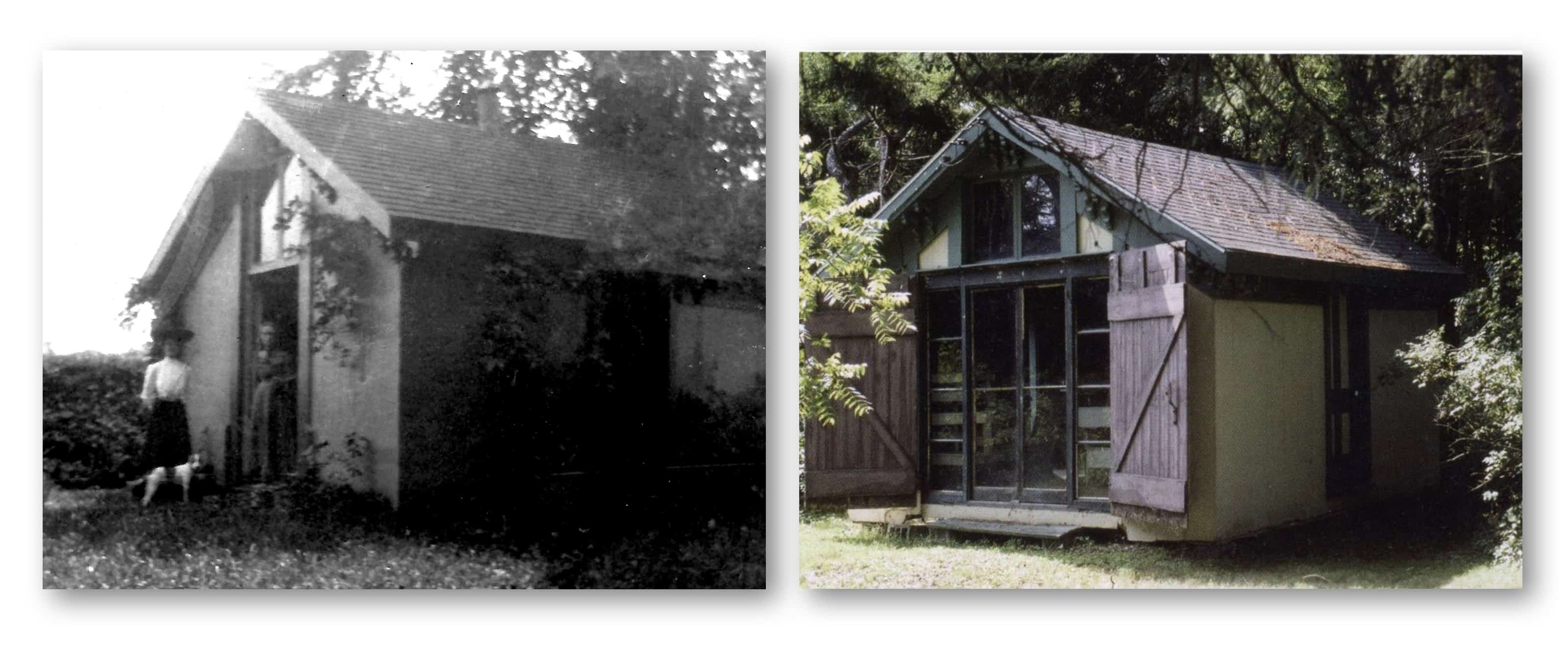 Return to Becoming an Artist Index
II. CITY OF SCHOOLS: RONDEL
Return to Becoming an Artist Index
II. CITY OF SCHOOLS: RONDEL
Caroline’s more formal training began at the Poughkeepsie Female Academy, located at 12 Cannon Street. Opened in 1837 the school was considered “a first-class school in every sense.†The course of study there included all the basics of the time – Latin and French, geology, algebra, penmanship and elocution: and others maybe not so basic – Evidences of Christianity, Etymology of words with their prefixes and suffixes and mental philosophy. Among the optional courses that would have attracted Caroline drawing, pencil, crayon, painting in water colors or oils and sketching from nature. The walk from Overlook Road, depending on the route was at least five miles one way and would easily have taken her and hour and a quarter to get there. Family oral history suggests she may have taken lessons with Samuel F.B. Morse but that has not been verified at this time.
Below: Poughkeepsie Female Academy on Cannon Street
Below: why Poughkeepsie was called the City of Schools
What has been verified is that Caroline studied for at least three years under Frederick Rondel. Paris born and trained, Rondel was lured to Poughkeepsie by Matthew Vassar to paint documentary pictures of his three ancestral homes. On February 10th, 1862 Rondel took out a newspaper ad announcing the opening of his studio for ladies at his residence on Mansion Square, the corner of Clinton Street. He was also a professor of painting at the Cottage Hills Academy. Beyond his role as an art instructor, Rondel became a friend and a mentor to Caroline, advising her not only on her art but also on the business side of her career. An 1865 entry in her cousin Edmund Hart’s diary recounts a chance meeting with Mr. Rondel in Farnum’s drug store where Rondel was “profuse in his expression of admiration of Carrie’s artistic efforts. He predicts a brilliant reputation for her in a very few years if she only labors as assiduously in the cultivation of her talents as she has done†Hart also records that Rondel brought his students to painting parties along the Wappingers Creek at Heartsease.
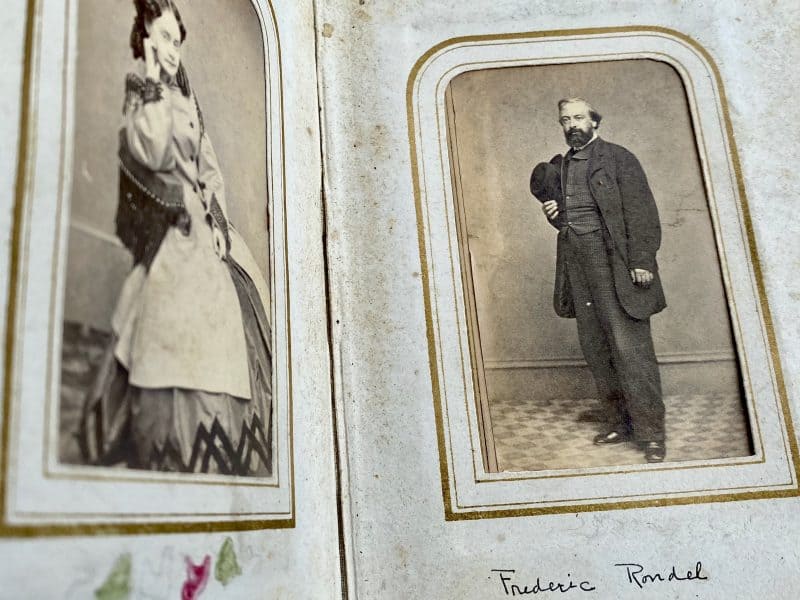
Three homes of Matthew Vassar, by Frederick Rondel, 1863
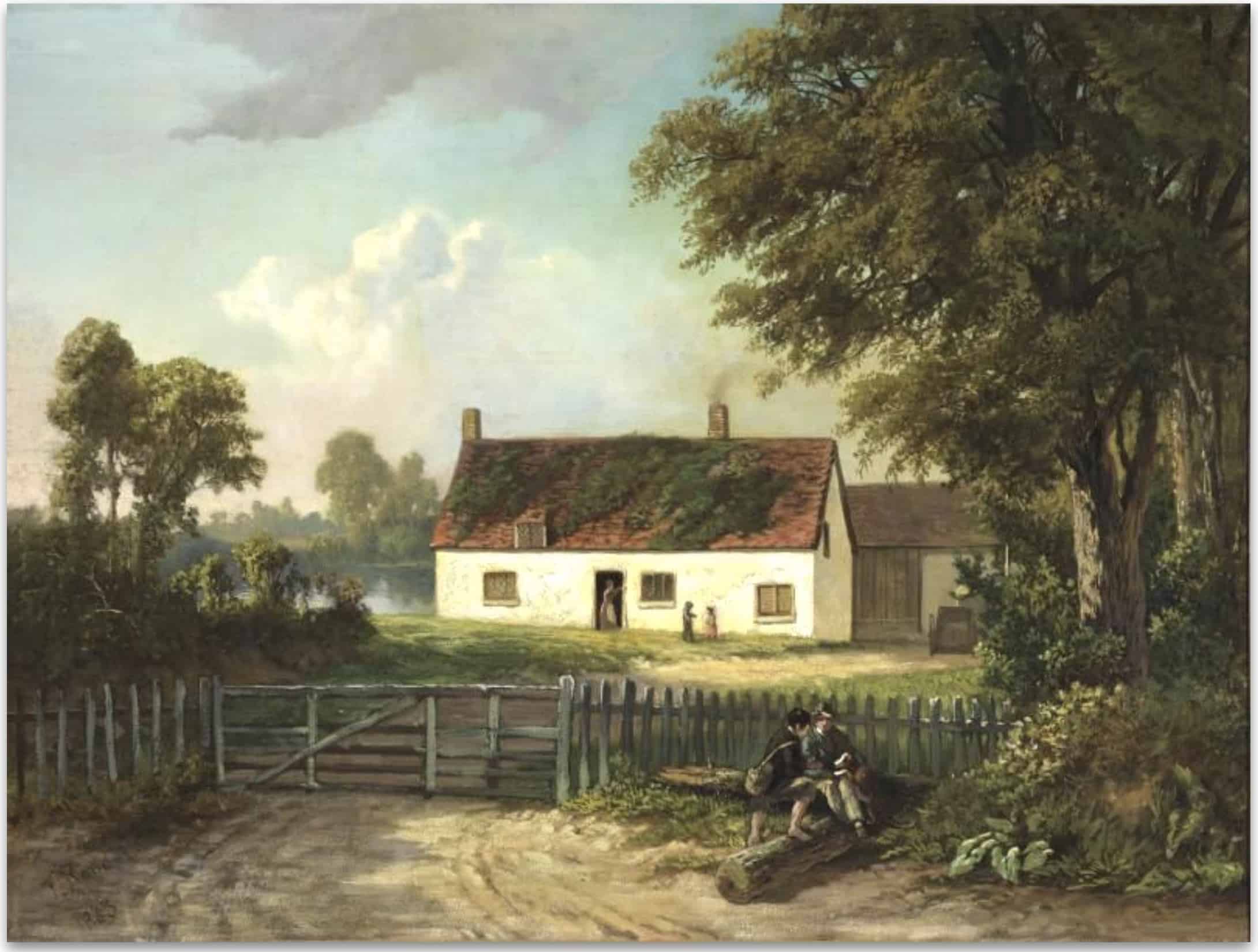
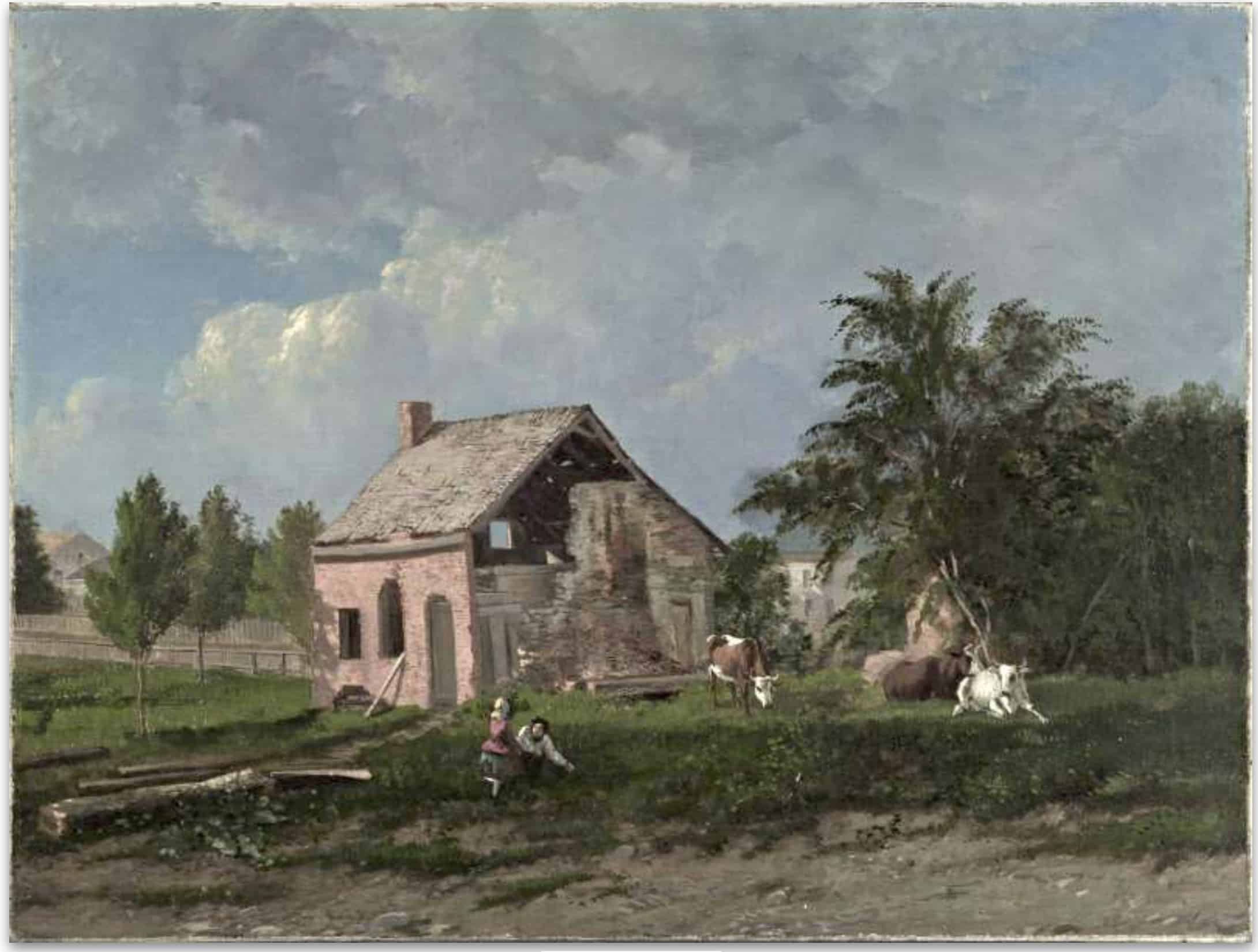
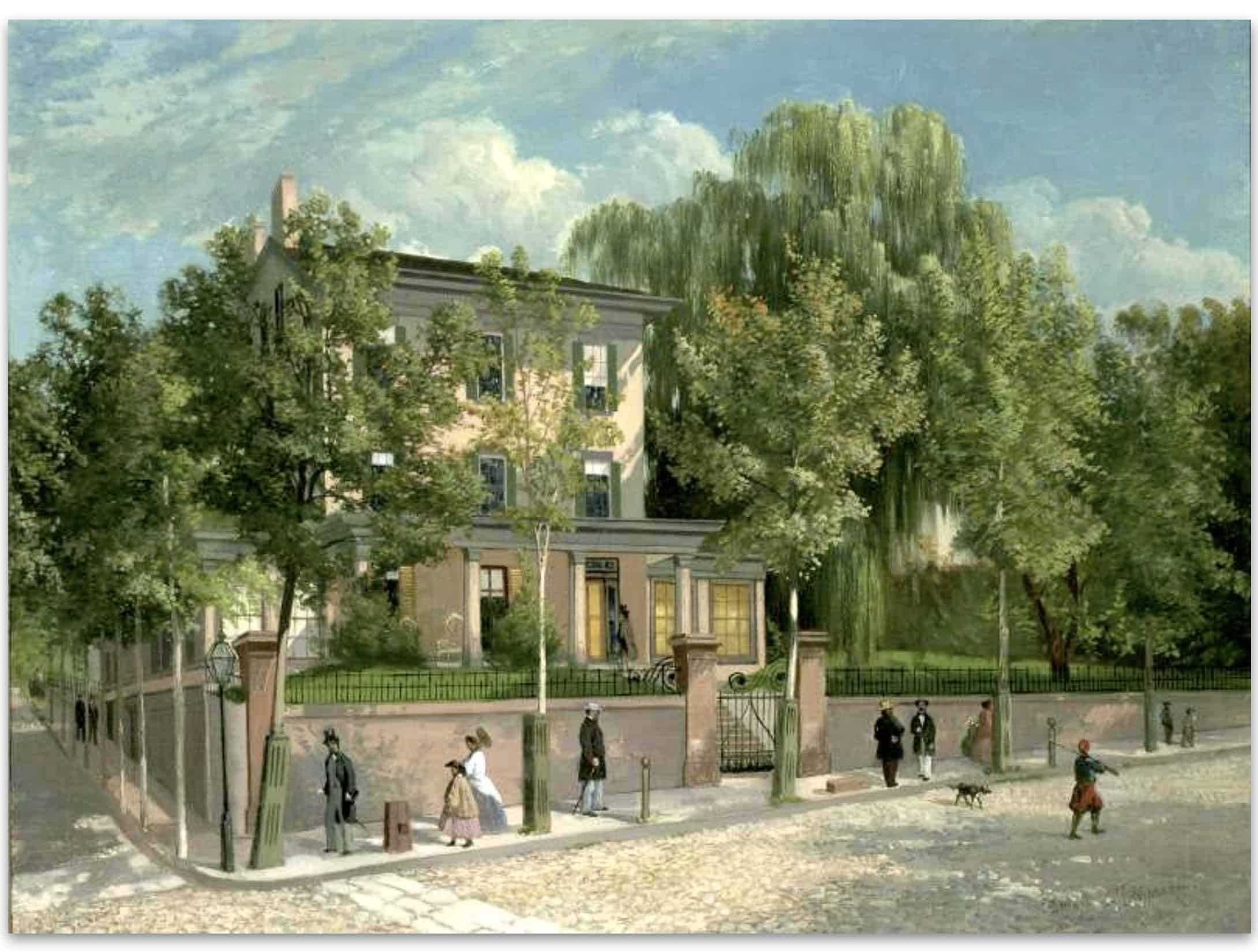 Return to Becoming an Artist Index
III. EMERGING VASSAR INFLUENCE: VAN INGEN
Return to Becoming an Artist Index
III. EMERGING VASSAR INFLUENCE: VAN INGEN
Another great influence on her development as an artist was a group of people brought to Poughkeepsie by Matthew Vassar for his “great experiment,†a college dedicated to the higher education of women. Although Caroline was never formally enrolled as a student at the college she somehow became enmeshed in the culture of the institution and formed a close circle of friends, teachers and mentors from those associated with Vassar and attended dozens of college programs and events as evidenced by invitations and programs.
Dutchman Henry Van Ingen was hired as the college’s first professor of art and art history. Educated in the Hague, he had specialized in landscape painting. Van Ingen was known for leading students out of the classroom to sketch nature. How Caroline came to know him is unknown but they became friends and he encouraged her, advised her and in 1878 purchased her painting “Contentment†for the art collection being developed at the College, promising his students to meet Miss Clowes, the artist. Frequently his letters to Caroline were addressed to “Miss C.M. Clowes, artist-painter.â€
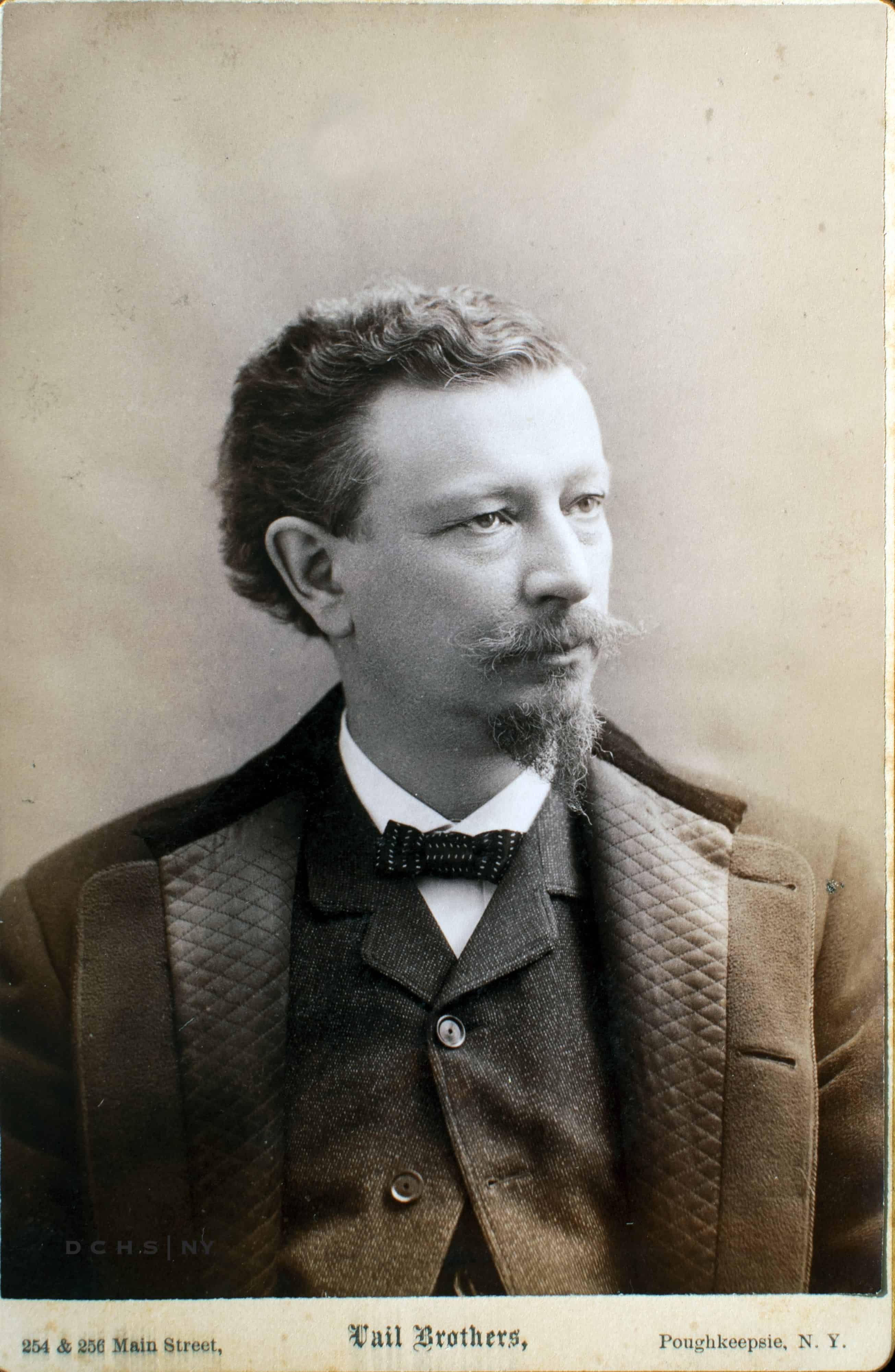
One of the more unusual friendships that Caroline formed at Vassar College was the one she established with Maria Mitchell. Appointed in 1865 to be included in the original nine-member faculty, Maria and her widowed father took up residence in the Observatory, the first building completed on campus. Again, there is no documentation as to how the two women came to know each other but they were close enough that the unmarried Mitchell felt comfortable encouraging Caroline to meet Chester Arthur. “He was well born, is well trained, sufficiently educated and very efficient. He is remarkably handsome. I think your domestic happiness will be perfect, as his tastes are aristocratic. It will be best for you to come for him with a carriage. Feed him well and make much of him and he will not stray.†One presumes it wasn’t the Chester Arthur, but in any event, the match making didn’t work out as Caroline, like Maria, remained unmarried throughout her life.
Return to Becoming an Artist Index IV. NATIONAL ACADEMY OF DESIGN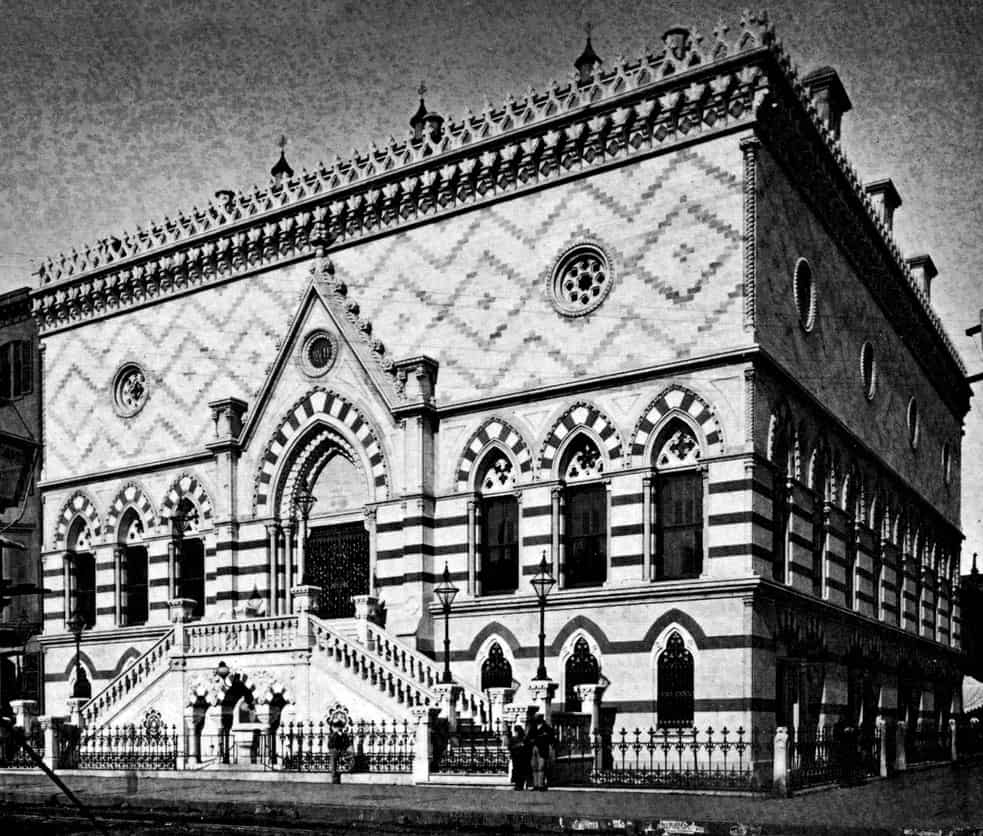
Exhibition here.
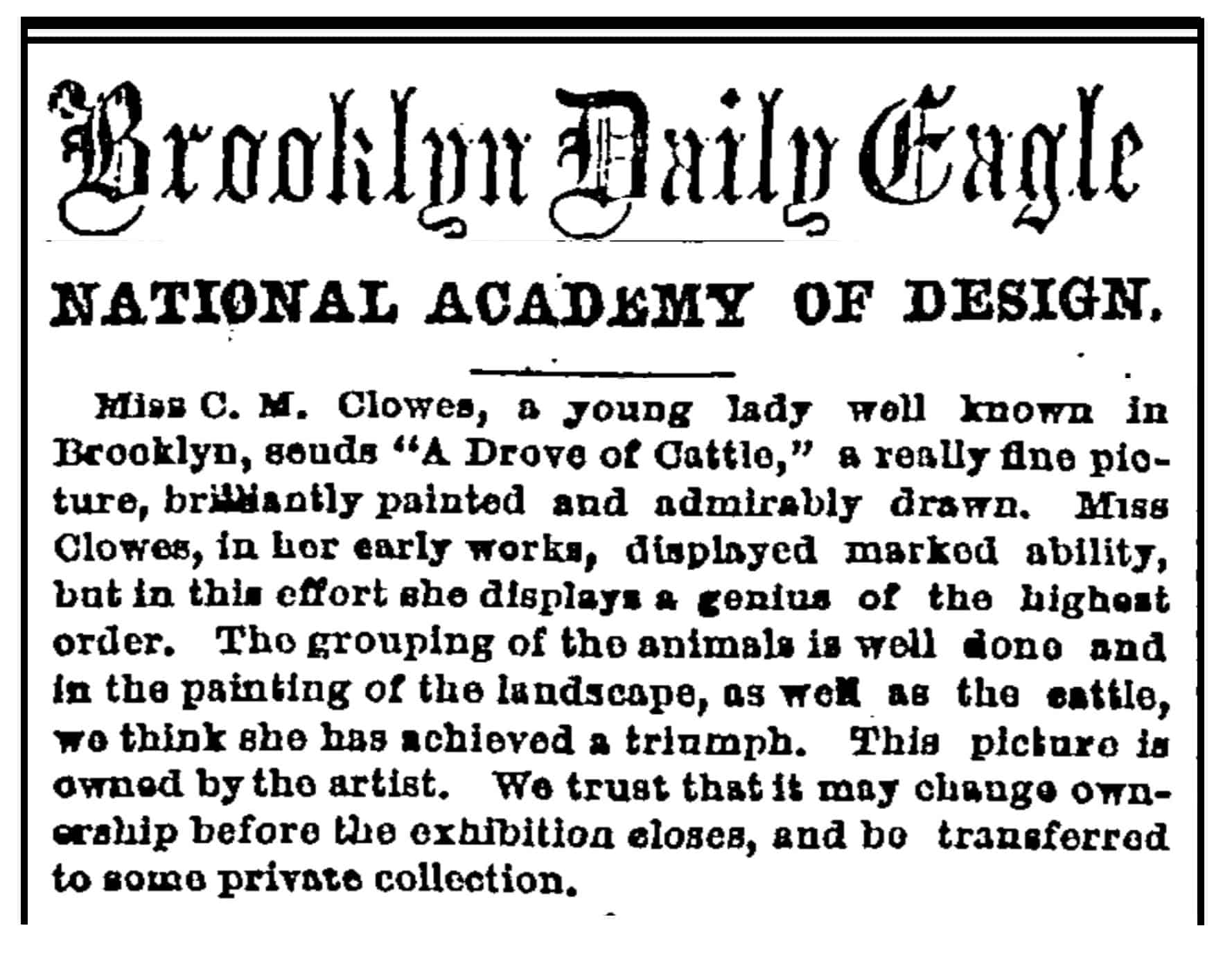

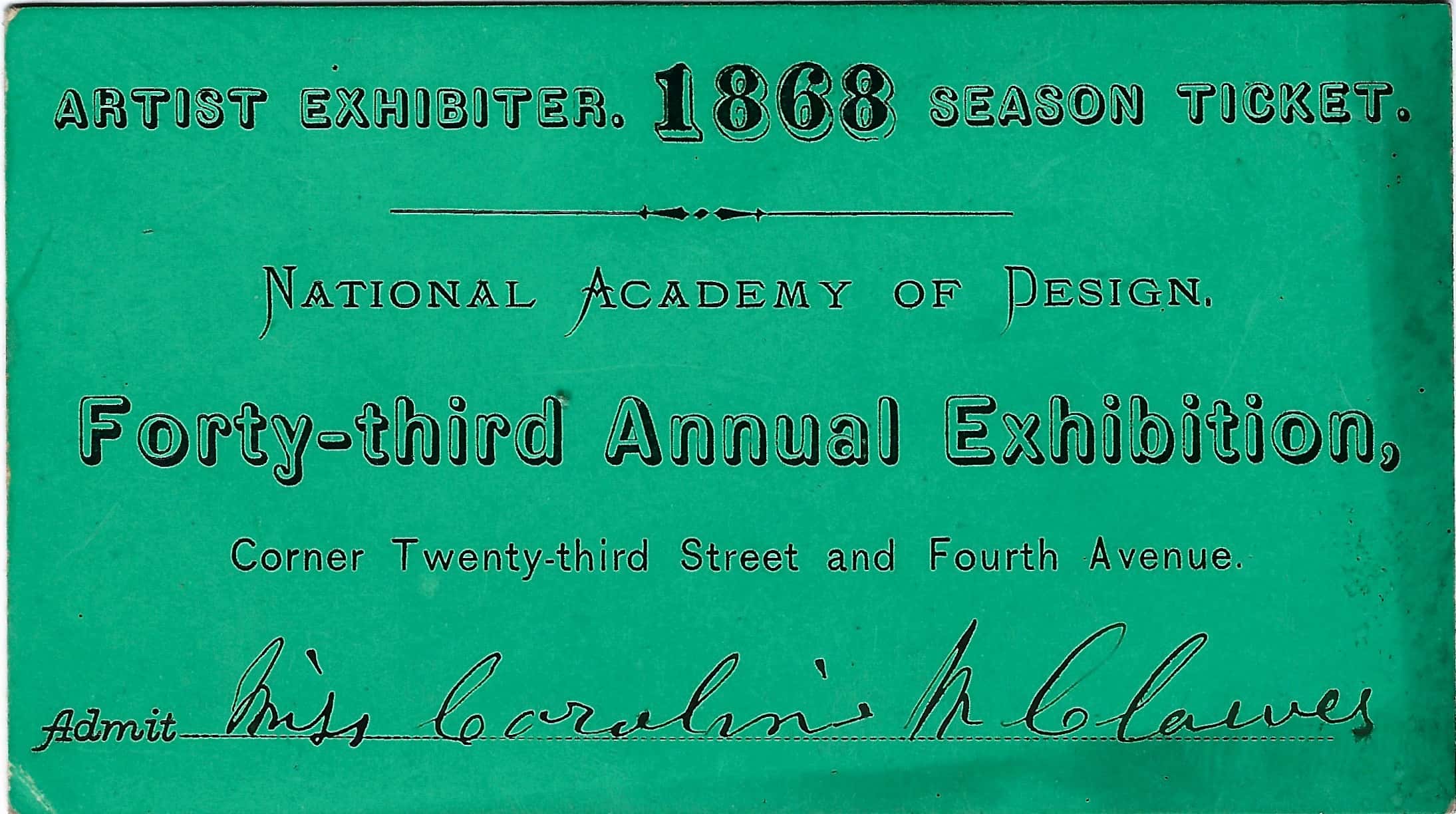

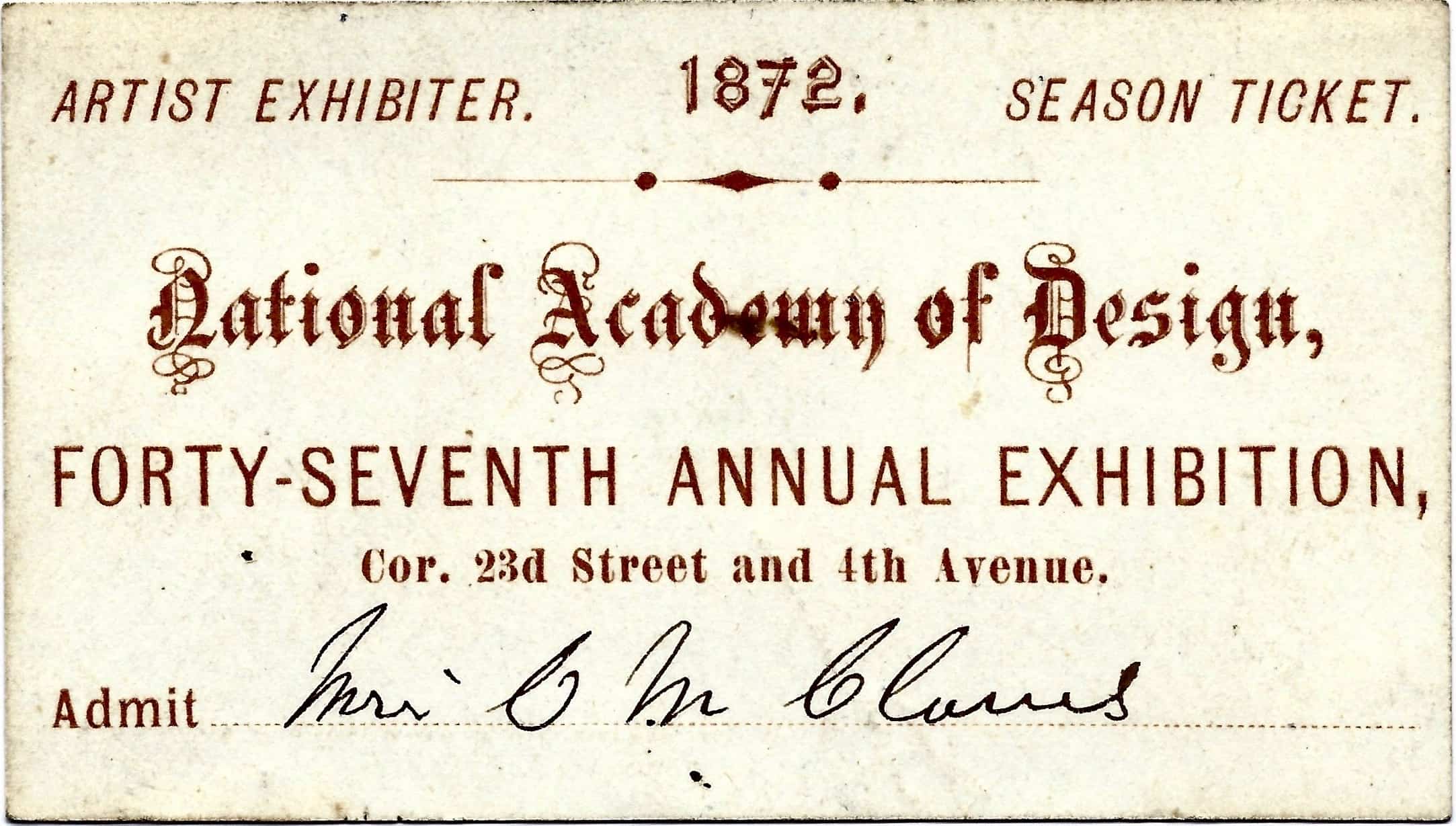
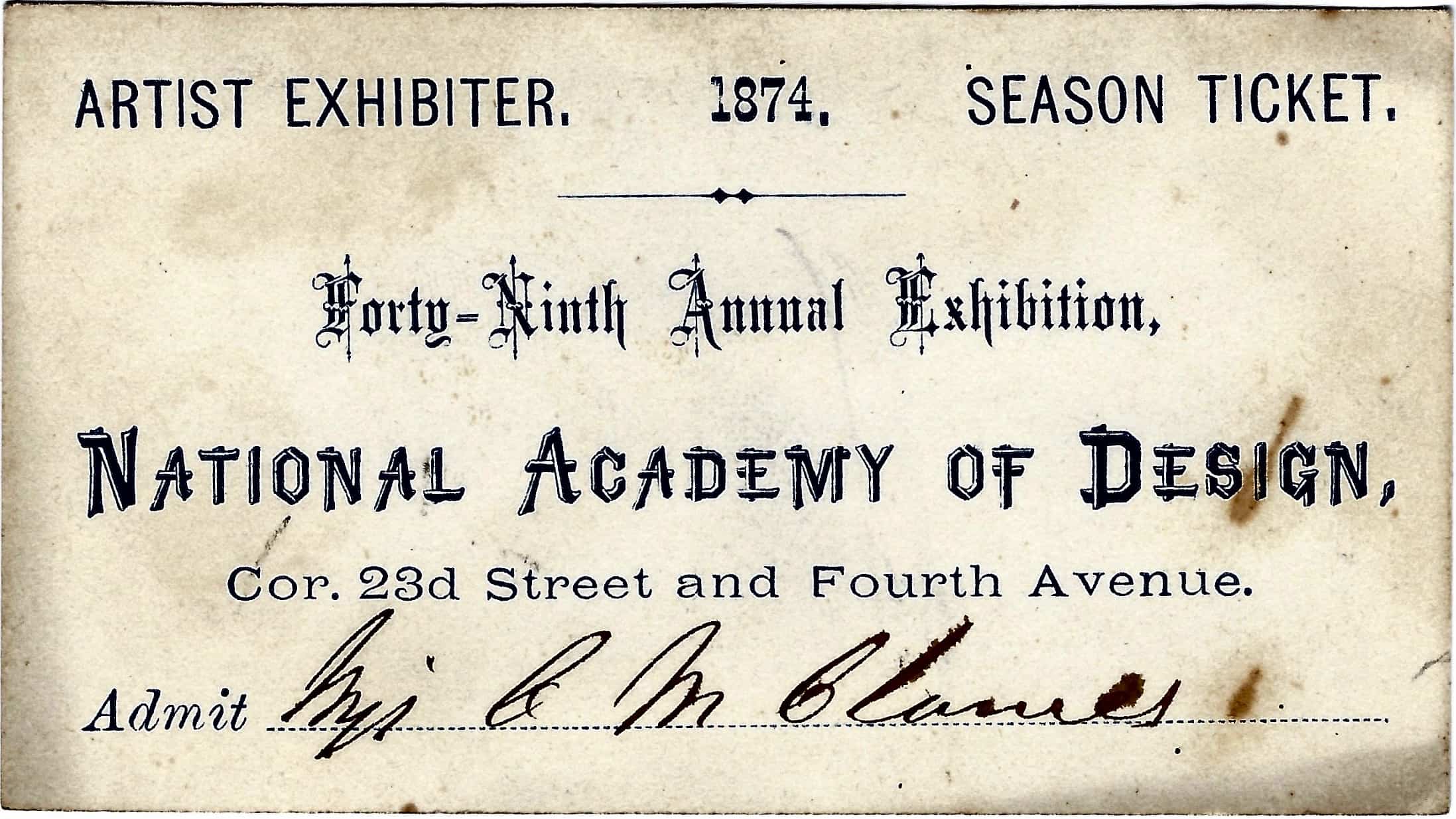 Return to Becoming an Artist Index
V. AN ARTIST IN BUSINESS & SOCIETY
Return to Becoming an Artist Index
V. AN ARTIST IN BUSINESS & SOCIETY
Caroline also formed a close relationship with James Henry Wright (1813-1883), a popular 19th century New York City artist who specialized in portraiture, still life and landscapes. Between 1842 and 1860 he exhibited in New York City at the National Academy and the American Art Union. Matthew Vassar personally commissioned Wright to paint a full length portrait that was completed in 1861, the year of the founding of the college. It was exhibited for the first time in the autumn of that year at the Central Baptist Church in Poughkeepsie where the portrait had been painted. Numerous letters in the Hart-Hubbard Collection attest to the role Wright played as a promoter of Caroline’s career as a working artist. In one of the letters dated January 7, 1872 he writes from the Morgan House informing Caroline that her picture will be on display at Goupil’s the coming week and noticed in the Home Journal asking $1,200.
Goupil & Cie was formed in Paris in 1829 and opened an office in New York in 1848. Initially in the business of making high quality prints from oil paintings, to reach a broader public, they evolved into being important dealer in art and oil paintings. By the 1860s Goupil was located at 772 Broadway, just south of the Grace Church, as this 1860 photo from NYPL shows.
The reference to Goupil’s is a reference to the Paris-based international art dealers at the time.
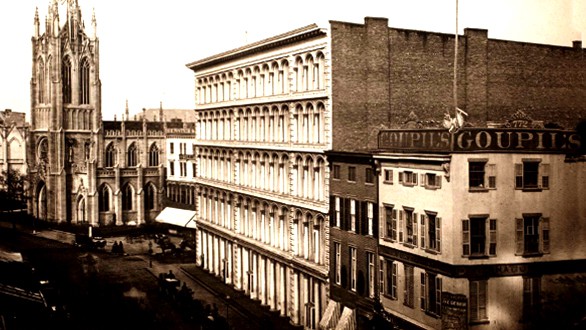
Click on letter to read transcription.
[drawattention ID=”16485″]Click on letter to read transcription.
[drawattention ID=16482]Click on letter to read transcription.
[drawattention ID=”16484″]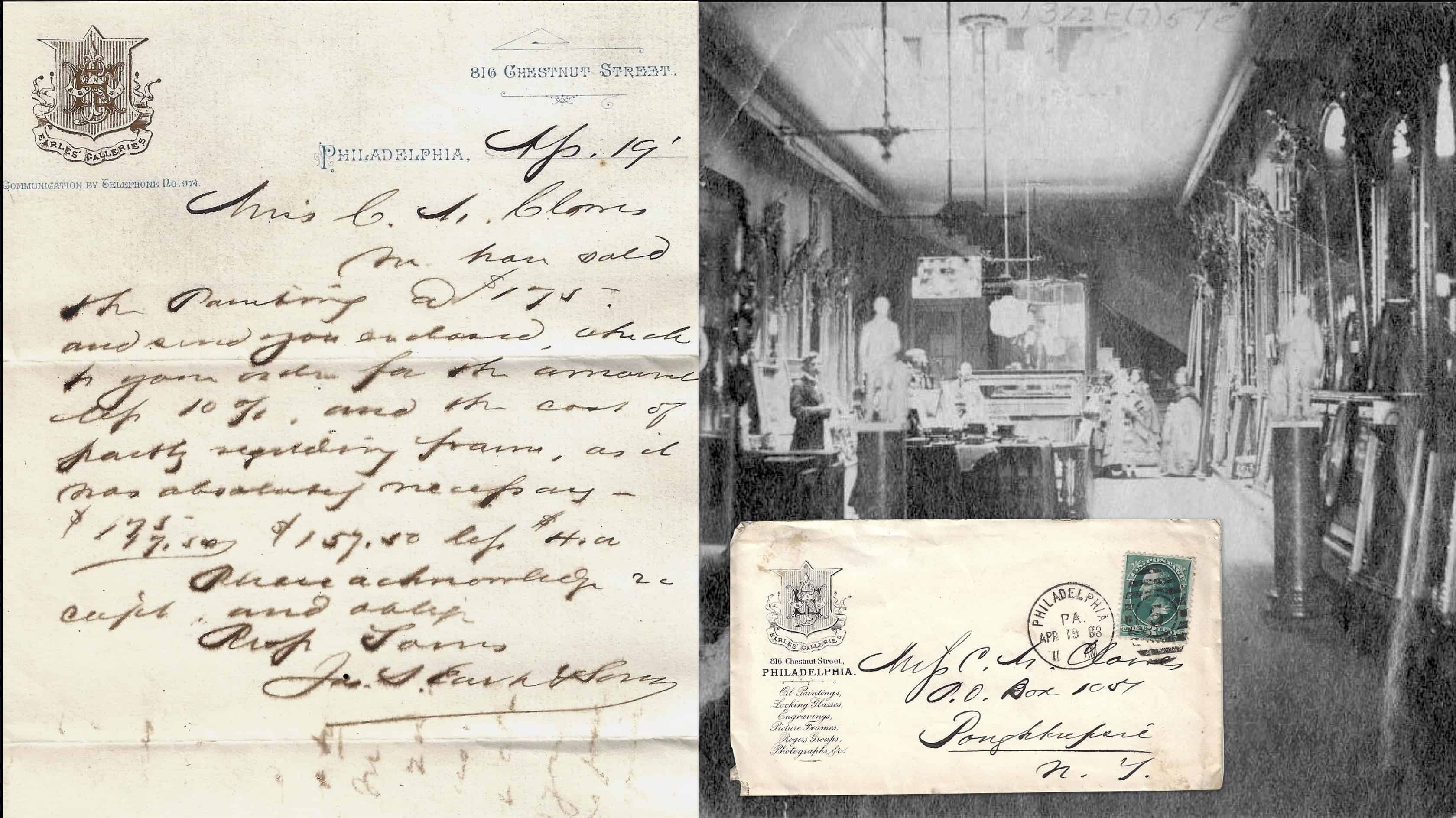
This April 1883 correspondence from the prestigious Earle’s Galleries in Philadelphia regarding a sale of Caroline’s paintings reveals the financials. Her painting sold for $175. After taking a 10% commission, she received $157.50.
NEXT CHAPTER: HER WORK PRIOR CHAPTER: EARLY LIFE BACK TO EXHIBITION START